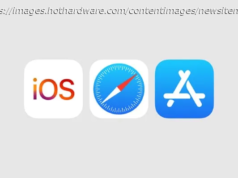The Lenovo Yoga Book C930 is a futuristic 2-in-1 convertible laptop, with a conventional screen paired with an e-ink display that you use for both writing and typing.
Gone is the Atom x5 processor. Instead, the Yoga Book C930 offers either an Intel Core i5 or a Core m3 processor. They’re Intel’s lowest-powered Core mobile chips, but they’re still far more powerful than any Atom. That should mean a much snappier Windows experience, especially when it comes to switching between apps and navigating through feature-rich websites.
Also gone is the option to configure a Yoga Book with Android. The Yoga Book C930 is Windows-only, which is probably a good thing considering that the era of using Android as a tablet operating system seems to be waning. PCMag reviewed the Android version of the original Yoga Book, but not the Windows version, so we’re eagerly looking forward to testing the new Yoga Book C930.
As it stands, Lenovo gave us a few minutes to play around with it, and it definitely made a good first impression. For instance, the original Yoga Book’s e-ink display was great as a pressure-sensitive drawing surface, but it suffered as an actual keyboard. Not so with the new version. Although the keys themselves are still flat and virtual, the typing response time seems to be greatly improved, with none of the issues we experienced with slow auto-correct and overly powerful haptic feedback on the original Yoga Book.
In addition to typing on the 10.8-inch e-ink display, you can put it into drawing mode, which banishes the keys and provides a large surface to sketch on using the included Wacom Active Pen. Like most midrange Wacom pens, this one offers 4,096 levels of pressure sensitivity and connects via Bluetooth. It’s far more accurate and precise than a cheap capacitive stylus. For more on how the e-ink display functions as a writing and drawing surface, check out our review of the original Yoga Book linked above.
The main display panel is improved, as well. It’s the same size as the e-ink display, but it now comes in both QHD (2,560 by 1,600) and full HD (1,920 by 1,080) resolutions. The previous Yoga Book offered only a full HD display, and we found it lacking compared with the True Tone display on the Apple iPad Pro, as well as flagship AMOLED smartphone displays.
Storage options include PCI Express SSDs in capacities up to 256GB, while the sole option for main system memory is 4GB. The port selection amounts to two USB Type-C ports, either of which can charge the Yoga Book C930. They replace the micro-style USB and HDMI ports on the original Yoga Book, which means connecting to external displays will require a dongle. A headphone jack is also AWOL. On the plus side, there’s a SIM card slot, and Lenovo plans to sell a 4G LTE version in the US, something that it rarely offers with its other consumer laptops.
The two halves of the Yoga Book C930 connect using Lenovo’s iconic watchband-style hinge, the same one present on the original Yoga Book. Interestingly, this hinge is disappearing from Lenovo’s flagship convertible laptop, the new Yoga C930.
Unfortunately, Lenovo’s improvements to the Yoga Book come with two main downsides. Most prospective owners will be able to live with the first, a tiny increase in weight from 1.52 pounds to 1.73 pounds. But the price increase will be harder to stomach.
The original Windows Yoga Book, which is no longer available for purchase, started at $549. The Yoga Book C930 will be available in October and starts at $999, nearly double. That means the Yoga Book C930 is now competing with premium ultraportable laptops in addition to tablets like the far less expensive iPad.
To see if the price increase is actually worth it, check back soon for PCMag’s full review. In the meantime, check out a few more pics of this unique 2-in-1.






